Beyond Sakura: Exploring Japan’s Other Spring Flowers
Brighten up your garden with five springtime blooms
Capture some of spring’s flower power by brushing up on your seasonal botanical knowledge! Whether you’re ready to hone your own green thumb or take flowery selfies to celebrate the season, read on to learn about Japan’s bounty of spring flowers.
Spring in Japan is perhaps one of the most highly anticipated seasons. Across the country, the weather gets warmer, the sun feels stronger and people gather for hanami (blossom viewing) to take in the timeless beauty of cherry blossom trees. Indeed, thanks to the enduring popularity of Japan’s representative sakura, spring here is seen as the season of flowers with light pink floral motifs adorning everything you’d like to eat and buy between March and May.
Yet, the famously ephemeral cherry blossom is not the only bloom to decorate Japanese spring gardens. If you’re looking to plant your own bouquet or gaze at a gorgeous botanical display, our list below has you covered! Here’s a primer on some of the prettiest flowers of the season.
1. Sweet pea
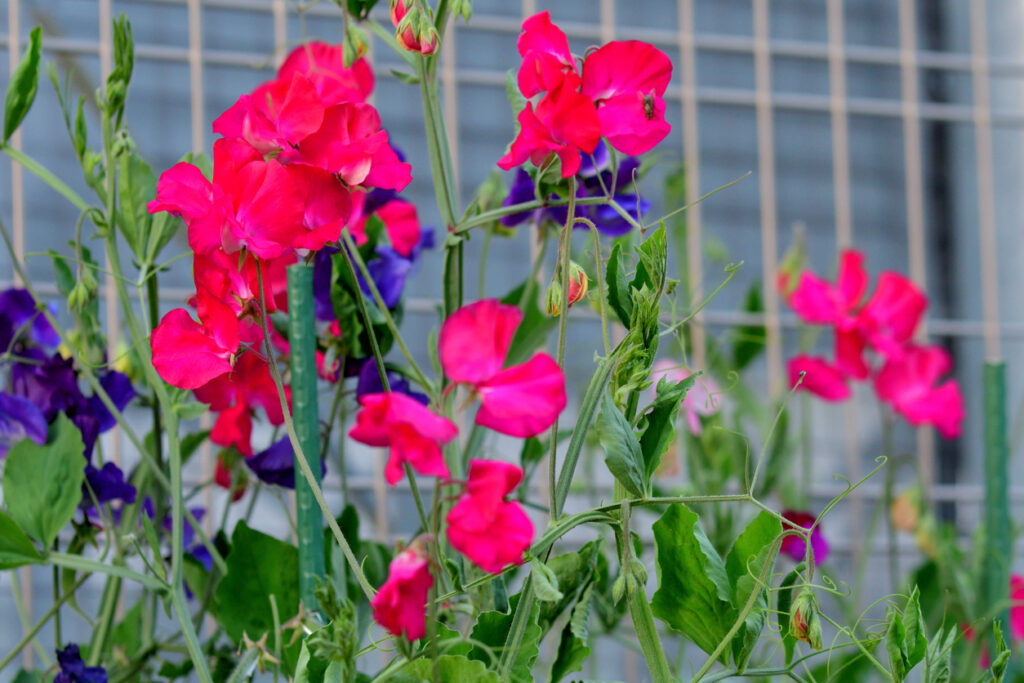 © Photo by iStock: magicflute002
© Photo by iStock: magicflute002Known as April’s flower of the month, pastel-colored delicate sweet peas (suiito pii, スイートピー) are an integral part of springtime bouquets sold in florists across the country and for good reason. Besides being dainty and spring-like, they also have a lovely sweet fragrance which adds to their charm in your home. While comparatively rare red sweet peas were historically not sold in Japanese flower shops, Matsuda Seiko’s 1982 hit Akai Sweet Pea (red sweet pea) led to a boom that continues until this day.
Sweet peas bloom between April and May in the Tokyo area and seedlings start to become available at home centers from January. Also, if you grow from seed, soak the large seeds in water for 12-24 hours before planting for better outcomes. As with most spring blooms, aim for a September or October planting in the ground of your garden. If you are planning on growing them as cut flowers after seeing them at the florist, be aware that they are actually vines. As such, we recommend to stake them, or prepare a net, fence, or trellis for them to climb on (Daiso, or other 100-yen stores have you covered for this!
2. Persian buttercup
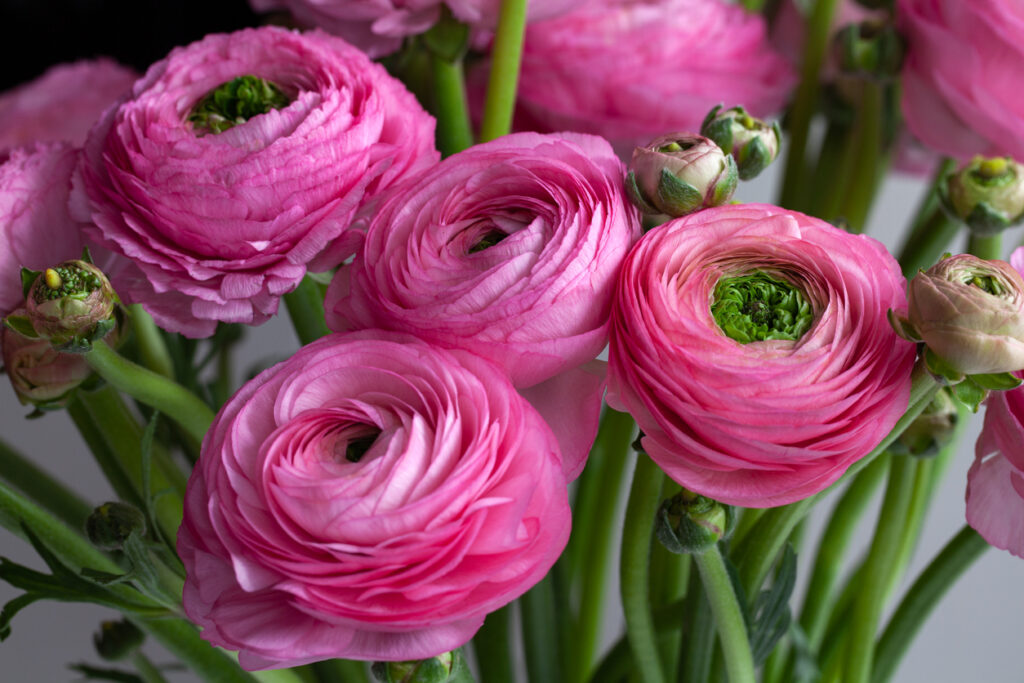 © Photo by iStock: TatianaMagoyan
© Photo by iStock: TatianaMagoyanAlthough part of the humble buttercup family, Persian buttercups (ranankyurasu, ラナンキュラス) offer gorgeous and showy blooms for your springtime garden. With layers of delicate crinkled petals and fern-like finely cut leaves, these flowers are show-stoppers in bouquets, on balconies, or growing in your yard. They also come in all the colors of the rainbow and bloom consistently for a whole six weeks.
When planting from the bulb, make sure to soak in water for an hour first. Plant in September or October in your garden and make sure it has lots of sunlight, or find seedlings in late winter to bloom outside for you in early spring March and April. They will happily grow in the ground or in containers, but be careful that their environment— and especially their leaves and flowers—doesn’t get too moist via rain or your watering can. Sandy soil and a pot with good drainage are best for these beauties.
3. Flowering quince
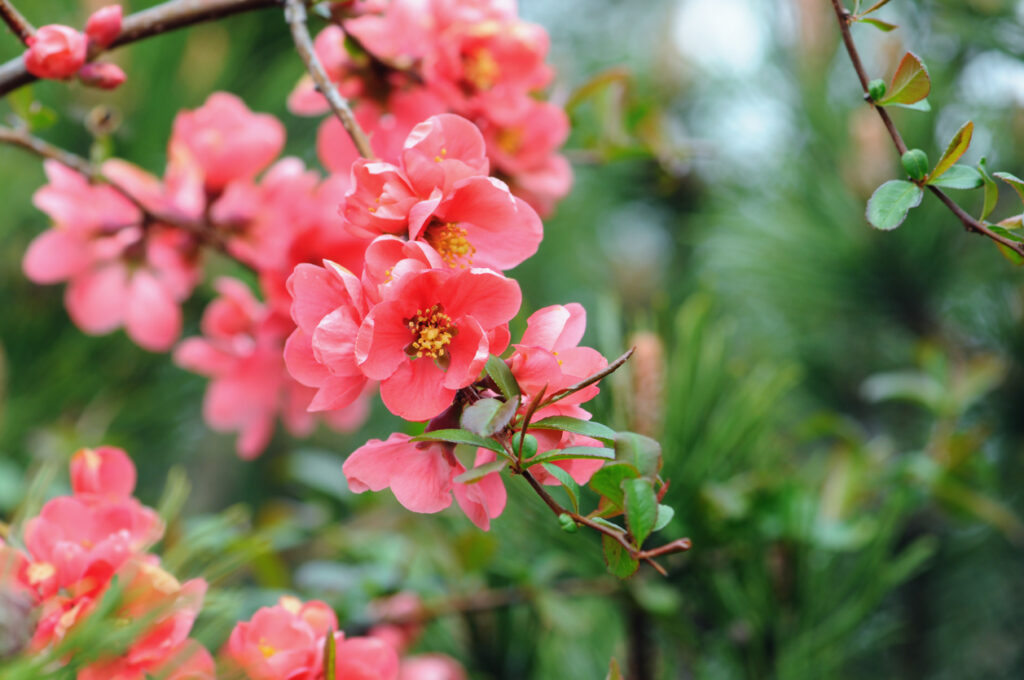 © Photo by iStock: hsvrs
© Photo by iStock: hsvrsThe beautiful flowering quince (boke, ボケ) comes into bloom in March. With its cute and colorful flowers, it has a popular spring presence at florists nationwide. With red, white, orange, or pink blossoms and dark green foliage, the flowering quince is a member of the rose family as you may have guessed from its multilayered petals. In fact, this native to Asia is one of the world’s oldest landscape plants. So, why not try to buy a bonsai version to brighten up your balcony?
Although its impressive blooms imply a high-maintenance plant, this couldn’t be further from the truth if you buy them as seedlings or small bushes. In the ground or in a pot, Japanese flowering quince are hardy and unfussy—a great plant for beginners! They enjoy sun or partial shade and are happy with most soil provided it is not overly wet. As such, a pot with good drainage in a sunny spot will go a long way. The flowering quince blooms for about 10-14 days in March, April or May depending on the variety and follows its floral display with edible (and adorable) yellow fruits just perfect for preserves.
4. Wisteria
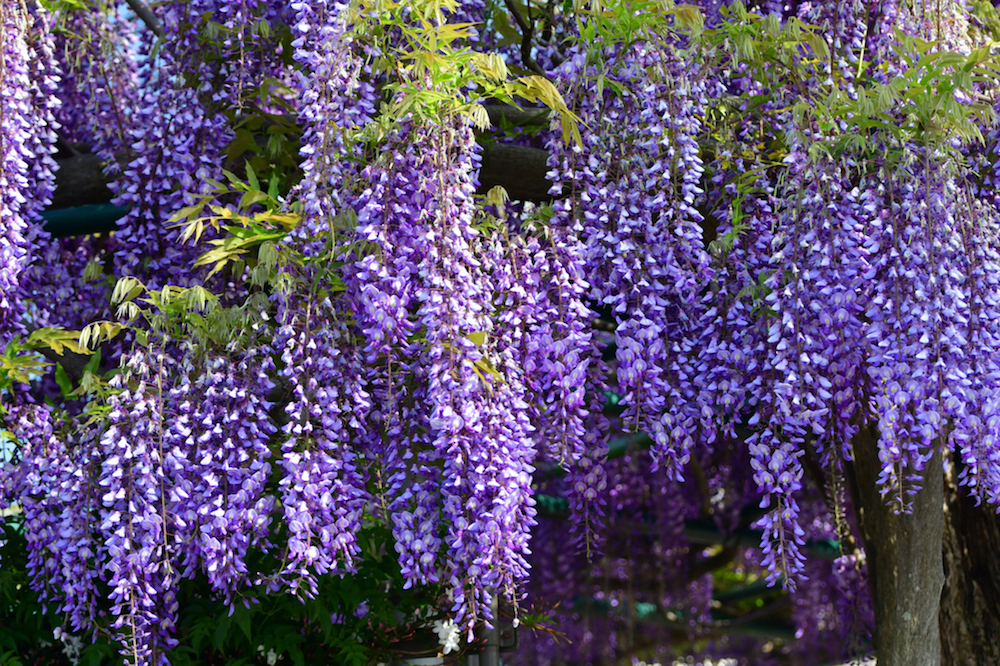 © Photo by iStock: magicflute002
© Photo by iStock: magicflute002Rather than providing a cut flower for your vases, wisteria trees (Fuji, 藤) offer a stunning canopy of hanging flowers that provide a glorious backdrop for springtime photos. Native to Japan, these burst into flower from mid-April to early May, drawing crowds for their multicolored curtains of blossoms and pleasing scent. Indeed, they are known for their uniquely refreshing sweet smell often contrasted with the strong perfume of tuberoses or gardenia. Don’t miss these gorgeous blooms in dedicated gardens across the country, like the Fujinohana Monogatari Ofuji Festival at Tochigi’s Ashikaga Flower Park or the Kawachi Wisteria Garden in Kitakyushu.
Wisteria can be grown in a pot or planter as well as in a garden, provided the strong trunk and side shoots are supported. This is a plant that you’ll want to purchase as opposed to starting from seed as it needs to be about four years old to start producing flowers. In a planter, be sure to give it lots of room from the get-go as it dislikes being transplanted too often and feed it with plenty of water and fertilizer. Since the root bases on wisterias grow very quickly, you will also have to trim the roots to keep it in a pot. Make sure to place your planter in the full sun for the best chance at having these sensational blooms in your own backyard!
5. Azalea
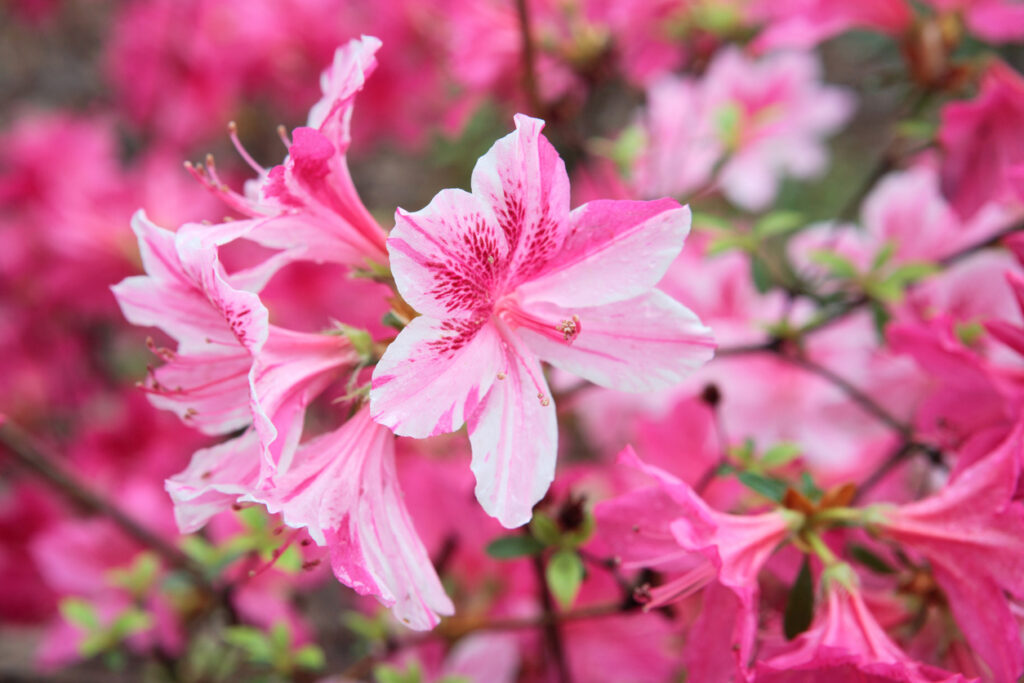 © Photo by iStock: fstockfoto
© Photo by iStock: fstockfotoBeloved in Japan from ancient times, tsutsuji (つつじ) are a native Japanese species of azalea. With resplendent blossoms and stately foliage, this shrub erupts in flowers in April and May. With a wide range of pinks, purples, oranges, reds and whites, azalea flowers often bloom so prolifically that they cover the entire plant. When many of these lovely shrubs are grouped together, they form an impressive display. Check out Rikugien in Tokyo’s Bunkyo ward in late April and early May for a floral masterpiece of over thirty types and 1000 individual azalea plants.
While overseas, many azaleas are planted in the garden rather than in a pot, Japanese azaleas will grow well in a planter as well as in the ground. The best time of year to plant azaleas is in the spring, preferably in a cool, lightly shaded spot. They need a fair amount of sunlight so full shade should be avoided, but full sun can burn their leaves. Azaleas have shallow roots, so they grow best in well-drained soil and can be potted alongside other acid-loving plants like conifers. Water them well, especially when they are in their intense flowering period.
Enjoy these five spring flowers in your own backyard or balcony with our tips above to make the most of Japan’s glorious warm spring. Happy planting!












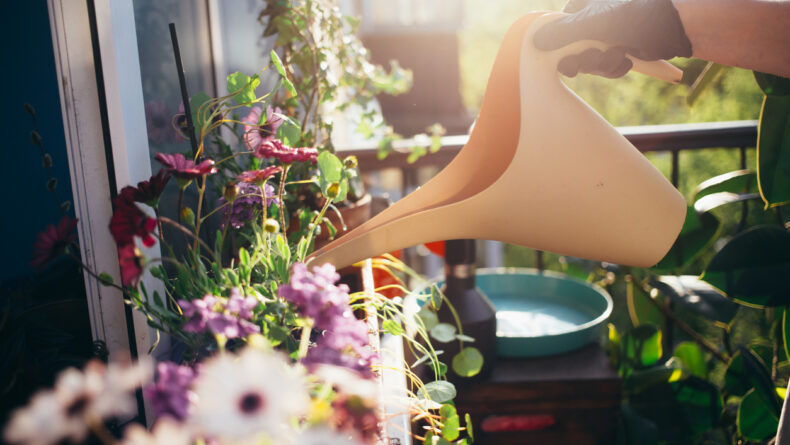
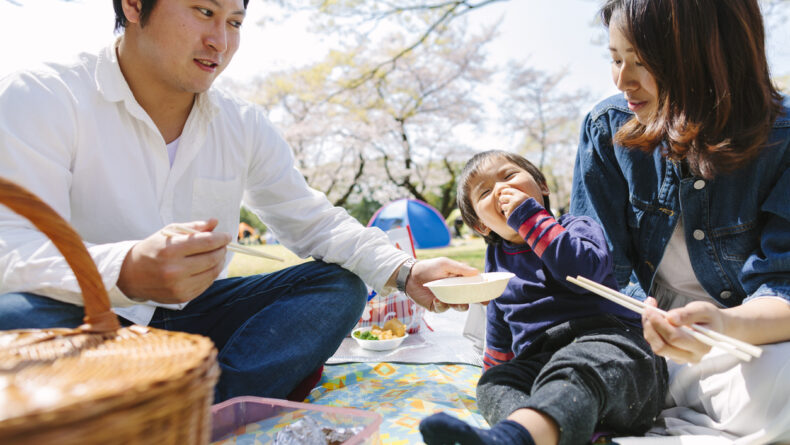

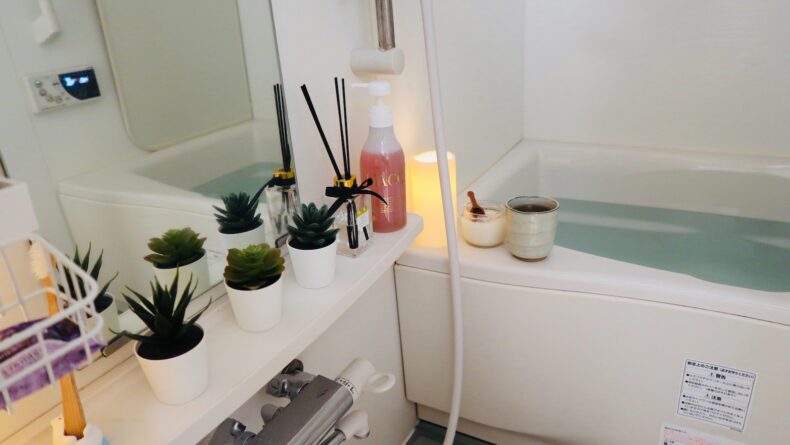
Leave a Reply